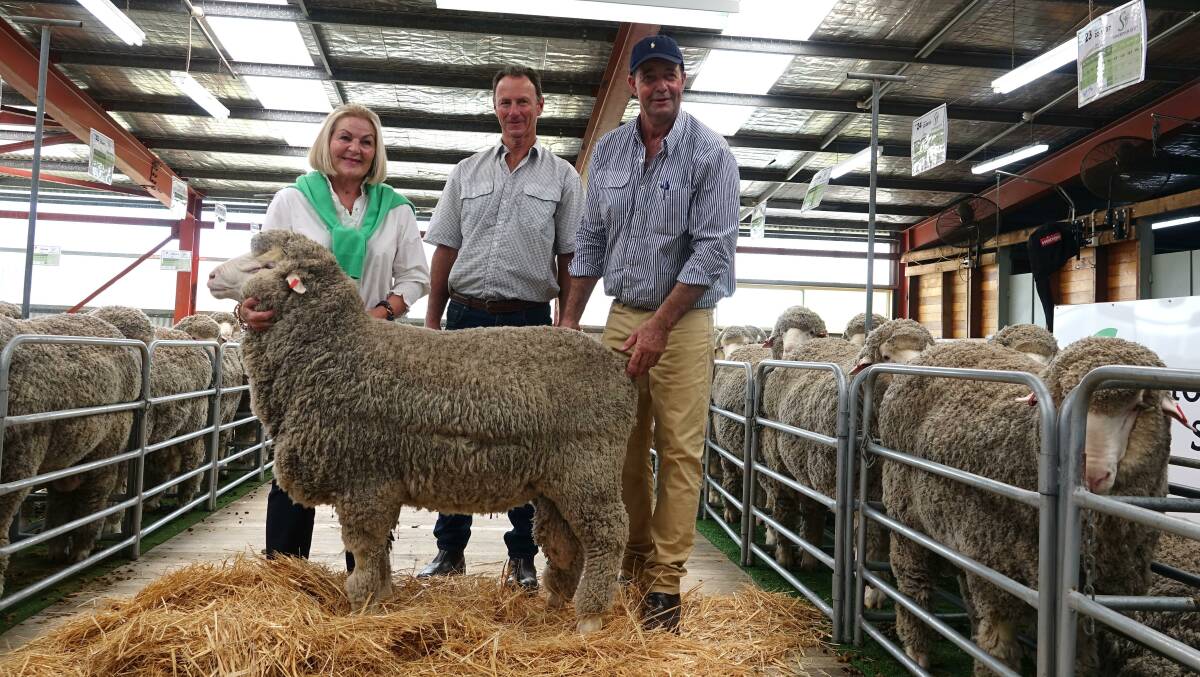
WESTERN Australian genetics have come to the fore at a Tasmanian stud, whose top-priced ram has gone to Victoria.
Stud co-principal Tim McShane said Stockman, Melton Mowbray, was one of the first of the Tasmanian Merino ram selling season auctions.
"It was an exceptional sale, from our point of view, and great to get a full clearance," Mr McShane said.
This year, Stockman had a total clearance of 60 rams, to a top of $4400, averaging $2683.
Last year more rams went to Victoria.
Buyer of the top priced ram John Williamson, Whorouly said he was running a flock of 1500 and had just started a small stud.
He said he had been buying Stockman rams for five or six years.
"Stockman have brought in different genetics from the mainland, all the time, which is working for them."
Mr Williamson said the top-priced ram had soft handling wool and a high eye muscle area.
"He had pretty good carcase attributes, he is a pretty good dual purpose sheep," he said. The ram would be used in the stud.
"I am only running the stud in a small way, I have a few locals buying at the moment, I am just starting," Mr Williamson said.
"The Stockman rams handle the high rainfall here.
"We are on 900 millimetres and they have nice waxy- type well-nourished wools that can do that."
Sired by West Australian ram Merinotech 15, Kojonup, lot 22 had a 20.2 micron fibre diameter, (FD) a 19.2 per cent co-efficient of variation (CV) and 99.5pc comfort factor (CF).
He had 35.5 millimetre eye muscle depth (EMD) a fat measurement of 5.0 mm and yearling fibre diameter (YFD) of -0.7.
His yearling clean fleece weight (YCFW) was 13.6kg and he had a Dual Purpose Plus index of 159.7.
Stud manager Kip Gray, Melton Mowbray, said Stockman looked all over Australia for genetics.
"We have been using the Merinotech genetics purely to put a bit more 'doing' ability into our rams, chasing the eye muscle and fat we have been looking for," he said.
The stud used 12 rams, including eight young sires bred at the stud.
"We bring in semen from the mainland, and we see how the resulting rams perform under our conditions," he said.
"If they perform, those rams will be lifted up into the top end of our breeding ewes, and we will utilise those genetics for the next three to four years," Mr Gray said.
He said Stockman looked all over the country for genetics, rather than buying rams. It had also used genetics from Roseville Park, Dubbo, NSW and Yarrawonga, Cunnigar, NSW.
Mr Gray said this year most of the rams went to Tasmanian producers.
"We have rams in the Campbell Town and the Launceston area," he said
"The further north you go the higher the rainfall, and the rams are obviously handling the higher rainfall - which is good.
"We have also got some that go into the Bothwell area, in the Central Highlands."
He said most of the stud's clients were realising it was probably better to keep buying genetics, even though there was a fall in the wool market.
"If they don't continue buying genetics this year, they are going to have to double up with buying rams next year, which is obviously going to be more costly," he said.
The stud's main aim was trying to breed a dual-purpose Merino.
"Nearly every one of our clients has a cross-bred enterprise - you have to have 'scale' and 'do-ability' to do that job," he said.
"You have to have a bit of fat in that carcase, especially when you get into these tight conditions, which we look like we might be travelling towards in Tasmania."
"We would like to continue with what's working, if something is working, it's not broken, why change?"
Nutrien Ag Solutions livestock agent Jock Gibson, Launceston, said the sale was strong, all the way through.
"They had a good line-up of rams, right the way through the catalogue," Mr Gibson said.
"They are breeding sheep with a good amount of wool on them and good quality size," Mr Gibson said.
Lot 36 sold for $4200 to James and Anika Scott from Hamilton Tasmania. Long-time buyer Tom Shoobridge of Cleveland Pastoral, Ouse, purchased Lot 12 for $4000.
Volume buyers included Tasmanian producers St Peters Pass and Dalmeney Park, both of Oatlands, and Cawood, Ouse.


